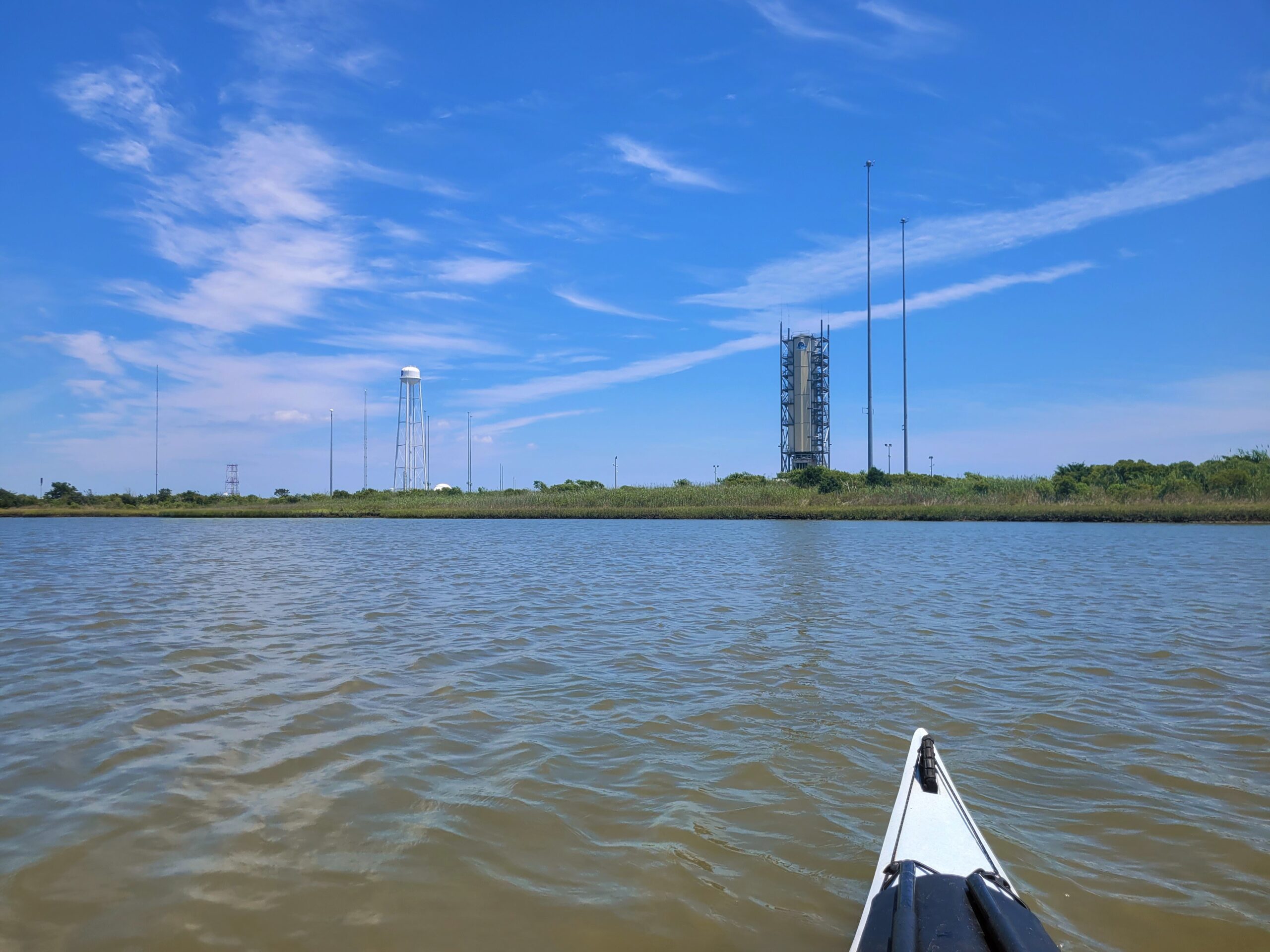Most paddlers probably aren’t thinking about outer space when they’re floating down a secluded marsh creek. Most paddlers aren’t imagining what it’s like to live on the International Space Station when they’re observing shorebirds running around on a mudflat. But on the eastern shore of Virginia, space research and paddling kind of go hand in hand!
While many of Virginia’s barrier islands are open to day-use visitation outside of shorebird nesting seasons, Wallops Island is closed to visitors year-round, and for good reason! Wallops Island, located just south of Chincoteague, is home to the NASA Wallops Flight Facility, and is the only launch range that is owned and operated by NASA. Between the facilities on the island and the base on the mainland, the Wallops Flight Facility is a hub of cutting edge research, suborbital vehicle launches, and small spacecraft development.
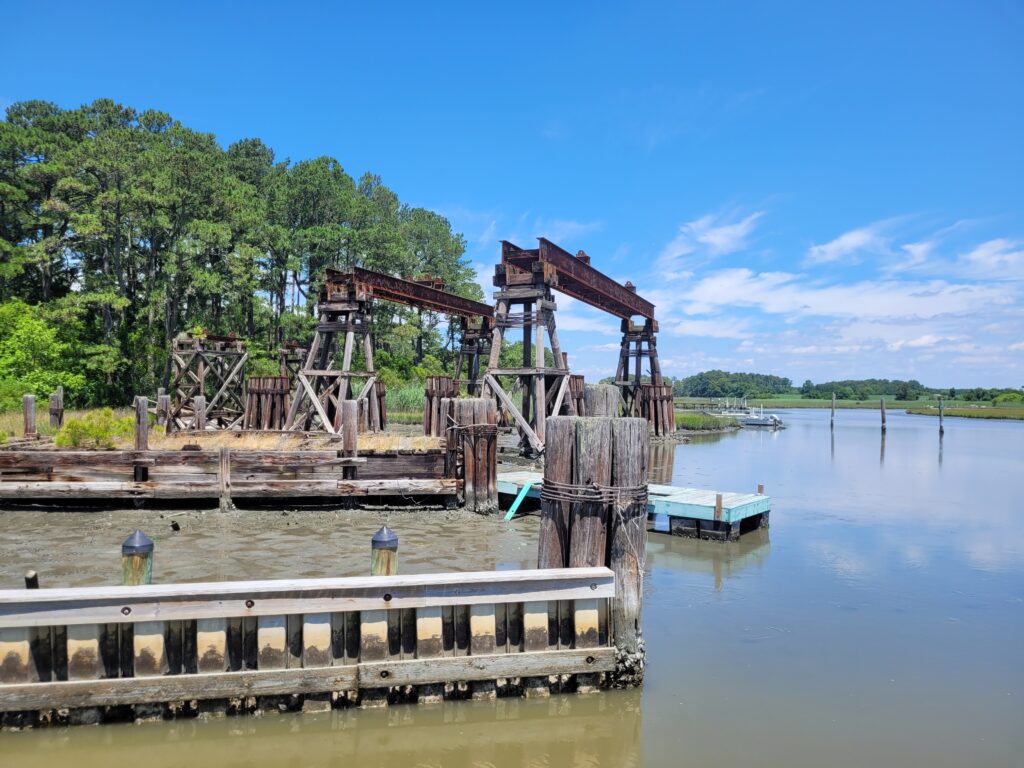
Although the island is not open to visitors, you can still paddle the waterways adjacent to the island and catch a glimpse of NASA’s infrastructure. In fact, the launch site closest to Wallops is the Old NASA Ferry Dock, located at the end of Pierce Taylor Road. This site was likely a focal point of activity before the bridge to the island was constructed in 1959. Today it is a quiet, rural, and scenic spot to enjoy a picnic.
For less experienced paddlers, venturing up Assawoman Creek is a leisurely paddle, protected from winds and strong tidal currents. For those looking for more of a challenge, heading out to explore the creeks behind Wallops Island makes for a fun, space-themed adventure. If you follow the water trail marked on our interactive map, it’ll keep you in the main channel that heads under the bridge.
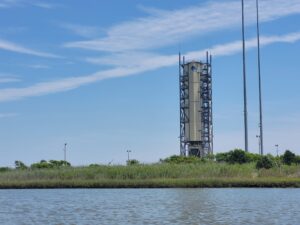 If you take a slight detour though, toward the island and into a creek marked as “Pie Hammock”, you can paddle pretty close to the island and the launch pad infrastructure. Just be sure to stay in your kayak – venturing out on land here would be strictly prohibited for security reasons.
If you take a slight detour though, toward the island and into a creek marked as “Pie Hammock”, you can paddle pretty close to the island and the launch pad infrastructure. Just be sure to stay in your kayak – venturing out on land here would be strictly prohibited for security reasons.
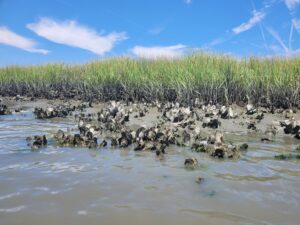 Most of the other marsh creeks that extend off of the main water trail are navigable, even at low tide, so it’s worth taking the time to explore more than just NASA. This area is definitely a birder’s paradise, with frequent sightings of black skimmers, tricolored herons, egrets, American oystercatchers, Forster’s terns, and least terns. You might even catch the call of a peregrine falcon as you make your way under the bridge. If birds aren’t your thing, the creeks are also packed with marine life, including diamondback terrapins, blue crabs, periwinkle snails, and oysters.
Most of the other marsh creeks that extend off of the main water trail are navigable, even at low tide, so it’s worth taking the time to explore more than just NASA. This area is definitely a birder’s paradise, with frequent sightings of black skimmers, tricolored herons, egrets, American oystercatchers, Forster’s terns, and least terns. You might even catch the call of a peregrine falcon as you make your way under the bridge. If birds aren’t your thing, the creeks are also packed with marine life, including diamondback terrapins, blue crabs, periwinkle snails, and oysters.
Several times a year, when rocket launches are scheduled, some waterways around Wallops Island are closed to all vessels. While it would be an incredible experience to watch a launch from a kayak, you’ll need to review the U.S. Coast Guard’s Notice to Mariners in advance, to plan where you can safely watch from. Your safest bet is to choose a waterway that is close to a designated launch viewing site on land. To learn more about what types of launches occur at Wallops and what to expect when viewing a launch, check out the tips from the visitor center.
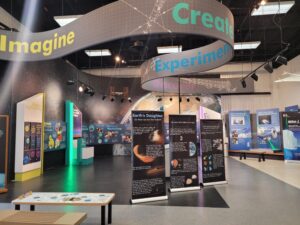 Even if you’re not in the area on a launch day, the visitor center is still a must-see! Typically it is open Tuesday-Saturday, 10 a.m. – 4 p.m., but that schedule can be altered from time to time depending on NASA’s operations.
Even if you’re not in the area on a launch day, the visitor center is still a must-see! Typically it is open Tuesday-Saturday, 10 a.m. – 4 p.m., but that schedule can be altered from time to time depending on NASA’s operations.
The museum is packed with hands-on and interactive exhibits that appeal to all ages, covering topics from scientific balloon and sounding rocket launches, to earth science and engineering. It’s a great way to learn about not only the cutting edge technology that’s being developed today, but also to find out about the earliest launches at Wallops, dating all the way back to 1945. Since then, over 16,000 rockets have been launched from the island!
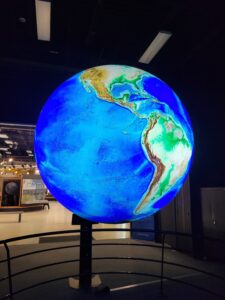
If, after your visit to the NASA visitor center, you are still craving to learn more about science on the eastern shore of Virginia, head on over the causeway through Chincoteague, and check out the visitor center at the Chincoteague National Wildlife Refuge. Here you’ll discover more about the species that make up the ecosystem surrounding Assateague, Chincoteague, and Wallops Islands. And if you’re still thirsty to learn more, you may even want to check out some of the programming offered at the Chincoteague Field Station. Some of their field trips, family camps, and road scholar programs provide exclusive access to visit Wallops Island itself!
Happy Water Trails!
About the Author: Laura Scharle lives on the Eastern shore of Maryland and is a frequent paddler in coastal Virginia. She is a Virginia certified ecotour guide and is an independent marketing contractor with a focus in ecotourism and heritage tourism. Laura can be reached through our Eastern Shore ecotour guide listings.

